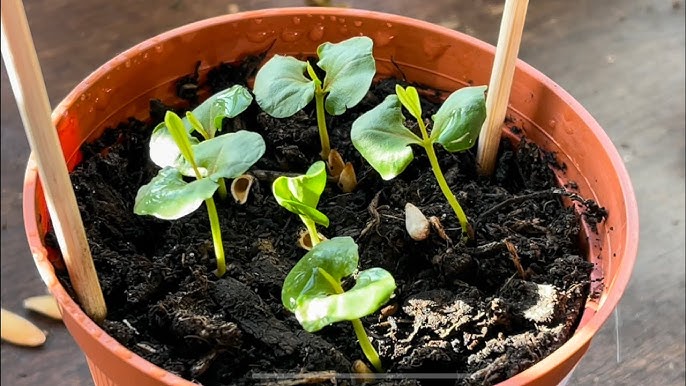How To Grow A Pomegranate Tree From Seeds In A Pot
Pomegranate trees are admired not only for their delicious, nutrient-rich fruits but also for their stunning ornamental appeal. If you lack a large backyard, worry not! Pomegranates can thrive in pots, making them an excellent choice for urban gardeners and those with limited space. Here’s a step-by-step guide to help you grow your own pomegranate tree from seeds.


1. Collecting Seeds
Select a Ripe Pomegranate:
- Choose a firm, brightly colored fruit that is free from blemishes.
Extract the Seeds:
- Cut the pomegranate in half and gently scoop out the seeds.
Clean the Seeds:
- Place the seeds in a strainer and run cold water over them to remove any attached pulp.
2. Preparing the Seeds
Soak Overnight:
- Place the cleaned seeds in a bowl and cover them with water. Allow them to soak overnight.
Stratification (Optional):
- This optional process involves placing the seeds in a moist paper towel inside a plastic bag and refrigerating them for a few weeks. This can enhance germination rates, although pomegranate seeds often germinate well without stratification.

3. Planting the Seeds
Choose the Right Pot:
- Start with a 6-8 inch pot that has good drainage.
Prepare the Soil:
- Opt for a well-draining potting mix, which can be purchased or prepared at home using equal parts compost, sand, and peat moss.
Sow the Seeds:
- Plant the seeds about ¼ inch deep in the soil, ensuring they are spaced at least an inch apart.
Water Lightly:
- Keep the soil moist, but avoid making it soggy.
4. Caring for the Seedlings
Sunlight:
- Ensure your pot receives at least 5-6 hours of direct sunlight daily.
Watering:
- Maintain consistent moisture in the soil, but do not let it become waterlogged. As the seedlings grow a few inches tall, you can reduce the frequency of watering.
Protection:
- While pomegranates can tolerate some cold, it’s best to protect young plants from freezing temperatures.

5. Transplanting and Pruning
Size Matters:
- When your tree outgrows its initial pot, transplant it into a larger pot or directly into the ground if space allows.
Pruning:
- Once your tree reaches about a foot in height, consider pruning it to encourage branching. This will create a stronger foundation and promote better fruiting in future years.
6. Fertilizing
- Use a balanced, slow-release fertilizer, preferably organic. Start fertilizing in the spring and continue through the growing season. Avoid over-fertilizing, as this can hinder fruiting.
7. Potential Challenges
Pests:
- Keep an eye out for aphids, whiteflies, and mealybugs. Regularly inspect your plant and treat any infestations promptly.
Diseases:
- Pomegranate trees are relatively hardy, but they can occasionally suffer from fungal infections. Ensure good air circulation and avoid overwatering.
8. Harvesting
Patience is Key!
- It may take a few years before your tree bears fruit, especially when grown from seeds. When the pomegranates reach a deep color and sound slightly hollow when tapped, they are ready to harvest.
Conclusion
Growing a pomegranate tree from seeds in a pot is a rewarding endeavor that is accessible even for those with limited space. With patience and proper care, you will be rewarded with beautiful foliage and mouth-watering fruits. Enjoy your gardening journey and the delightful fruits of your labor! 🌱🍎
